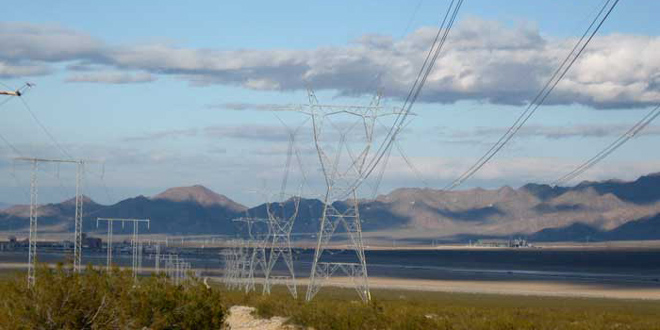By Robert Mullin
Meeting California’s 50% by 2030 renewable standard could require up to $5 billion or more in transmission upgrades, according to a report released this week by the California Energy Commission.
The report outlines what transmission projects the state must build or upgrade to connect load zones with areas identified as having the potential to provide more than 40,000 MW of new renewable capacity.
The study is a product of the Transmission Technical Input Group (TTIG) convened under the Renewable Energy Transmission Initiative (RETI), a collaboration that includes CAISO, the state’s major municipal and investor-owned utilities, the Western Area Power Administration and the California Natural Resources Agency.
RETI has determined that California will need an additional 25 to 108 TWh of renewables annually to meet its mandate, depending on growth in vehicle electrification, adoption of behind-the-meter solar and the success of energy efficiency programs.
That translates into 7,000 to 31,000 MW of new capacity, assuming a 40% average capacity factor, or 9,000 to 41,000 MW assuming a 30% capacity factor.
It also estimates building all of the transmission identified would cost more than $5 billion.
The TTIG said the capital costs included in the report are considered “conceptual” or “high-level” estimates that were derived from previous studies, which “should not be considered as reliable for specific resource addition purposes.” Actual costs — including those for meeting the lower-end estimate of new renewables — will depend on a combination of factors, including the cost-effectiveness of developing a specific set of resources and the transmission paths necessary to reach them.
Publication of the study comes two months after a public workshop in which transmission planners reported a portion of their findings to state officials. (See California Policy Goals to Require Significant Transmission Upgrades.)
While California has a “substantial amount” of non-firm capacity to interconnect new generators as energy-only resources subject to curtailment, the state falls short in the availability of full-capacity interconnections equipped to ensure that output is “fully deliverable” — or capable of reaching its load sink without hitting potential constraints.
California rules allow the state’s utilities to count only fully deliverable generation toward their resource adequacy requirements, excluding energy-only resources. For that reason, the TTIG, headed by CAISO Director of Infrastructure Development Neil Millar, assumed that all new renewable resources would require full-capacity interconnections.
CAISO can accommodate an additional 22,000 MW of energy-only resources, the report notes. The ISO is so far the only balancing authority area in the state to have studied the issue, so other BAAs have the potential to contribute additional energy-only capacity.
To perform its analysis, the TTIG broke the state into eight transmission assessment focus areas (TAFAs) where the large quantities of renewables could be developed to meet the state’s 2030 goals.
“The TAFAs identify a ‘hypothetical’ development potential for wind, solar and, where applicable, geothermal resources,” the report says.
Those hypotheticals show a combined 15,000 MW of potential renewable development — mostly solar — in Southern California’s Imperial Valley, Riverside and Victorville/Barstow areas. To tap some of that potential, load-serving entities could have to foot up to $1 billion to relieve a constraint east of the Miguel substation close to the border with Mexico. A $34 million upgrade to the relatively short 500-kV Lugo-Victorville line could provide 2,000 MW in incremental capability, the report shows.
In the central part of the state, the San Joaquin Valley and Tehachapi TAFAs together have the potential for another 10,000 MW of mostly solar resources. While San Joaquin would require about $400 million in transmission upgrades, Tehachapi would require a negligible amount of work.
The least promising area: all points north of San Francisco and Sacramento, where it would cost $2 billion to $4 billion to tap an estimated 5,450 MW of wind, solar and geothermal resources — the largest share of the $5 billion estimate.
“The bulk transmission system in the region is heavily utilized and would require substantial investment to allow for the delivery of new full capacity resources,” the report says.
The study also evaluated the potential for sourcing additional renewable energy via California’s major interties, including the California-Oregon Intertie in the north (2,000 MW), the Palo Verde-Delaney line to Arizona (3,000 MW) and the Eldorado/Mead/Marketplace (3,000 MW) links with Nevada. All three were found to be subject to the same constraints as the TAFAs with which they interconnect, compounded by the fact that the imported energy would compete with TAFA resources for transmission access.




